 |
 |
 |
| |
Association between Modifiable and Non-modifiable Risk Factors and Specific Causes of Death in the HAART Era: The Data Collection on Adverse Events of Anti-HIV Drugs Study -DAD Study
|
| |
| |
Reported by Jules Levin
CROI 2009
From Jules: This study from the DAD group made 2 important points: (1) cause of death were 32% due to AIDS and 37% due to non-AIDS causes (CVD-related 11%, non-AIDS cancers 12%, and liver-related 14%). They found few deaths due to renal causes and didn't have the power to adequately look at that. They also reported important risk factors for death but kind of obvious: hypertension, diabetes, HCV & HBV coinfection, but of note current CD4 and viral load were associated with risk for death. Of course smoking was associated with increased risk for death. Their 2nd major point is that some of these risk factors for death can be modified, doctors/clinicians and patients should be proactively addressing stopping smoking should be the top of the list, hypertension, diabetes and glucose levels that might not be diabetes yet, HCV & HBV coinfection (which many clinicians & patients are not addressing this adequately), and cardiovadcular disease, and diet and exercise. Not mentioned in this paper are bone disease and renal disease. HIV and age are substantial causes for bone and kidney disease, so monitoring bone disease by considering performing a bone dexa is important, and of course proper monitoring of renal disease is recommended.
Here is a link to EuroSida study finding the same.
Non-AIDS Illness More Common Than AIDS--and More Deadly--in EuroSIDA - written by Mark Mascolini - (02/12/09)
Colette Smith and D:A:D Study Group
Univ Coll London Med Sch, UK
Background: Excess mortality remains for HIV+ individuals compared to the general population. Identifying modifiable risk factors associated with specific causes of death could guide interventions.
Methods: Patients were followed from date of entry into the D:A:D study until death or last follow-up (through October 1, 2007). Cause of death was ascertained using the CoDe system. Adjusted rate ratios (RR) for the association between potential modifiable risk factors (hepatitis C and B virus [HCV, HBV], body mass index, smoking, hypertension [systolic BP≥140 or diastolic BP≥90 or anti-hypertensive use], diabetes, ART use, current CD4 count, current HIV RNA [current variables lagged by 3 months]) and death were obtained with Poisson regression, adjusted for other potential confounders (sex, race, risk for HIV infection, calendar year, age, prior cardiovascular disease (CVD) or AIDS).
Results: There were 2192 deaths in 33,347 people followed for 158,959 person-years (rate = 1.4/100 person-years).
Underlying causes were AIDS (32%), liver-related (14%), non-AIDS cancers (12%), CVD (11%), and other (31%).
Risk factors for overall death were smoking, low body mass index (<18 kg/m2), hypertension, diabetes, HBV/HCV-co-infection, low current CD4, and higher HIV RNA (table; for comparison, results for the 2 main demographic variables are also shown) although the strength of associations of the modifiable risk factors with the cause-specific death rates varied substantially.
Smoking was associated with CVD and non-AIDS cancers, HBV and HCV co-infection with liver-related deaths, and hypertension with liver-related and CVD deaths.
Diabetes was a risk factor for all specific causes of death except non-AIDS cancers, and higher current HIV RNA for AIDS-related and liver-related deaths.
Lower CD4 counts were associated with a higher risk of death from all specific causes of death.
Conclusions: Multiple potentially modifiable risk factors for deaths in HIV-infected persons were identified. These factors must be addressed to further reduce mortality. Maintaining higher CD4 cell counts is likely to have the broadest effect on decrease in deaths.
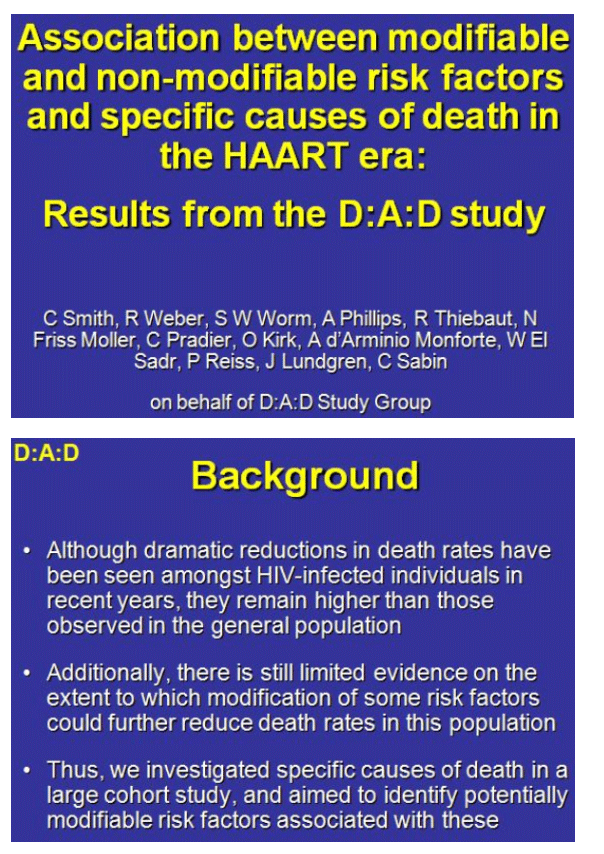
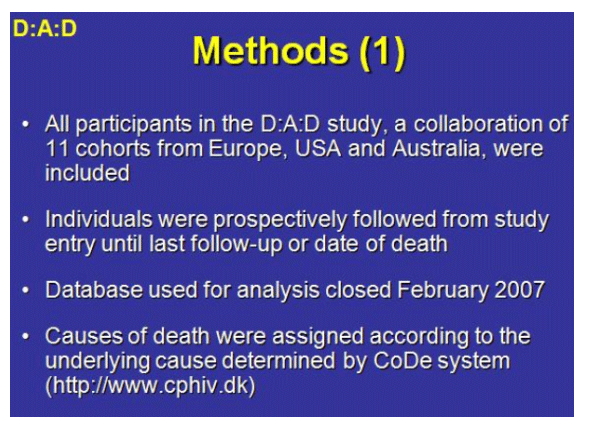
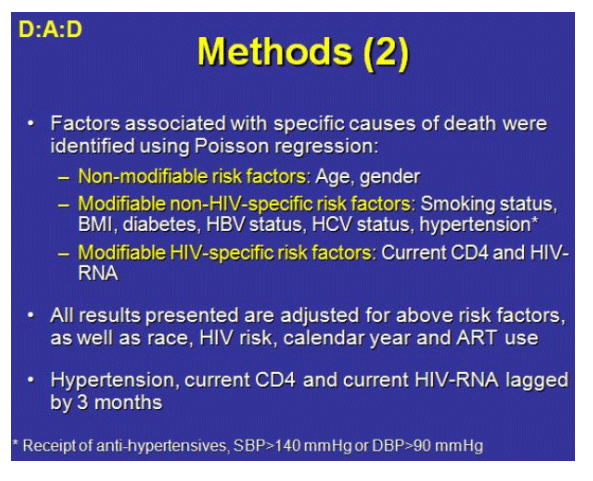
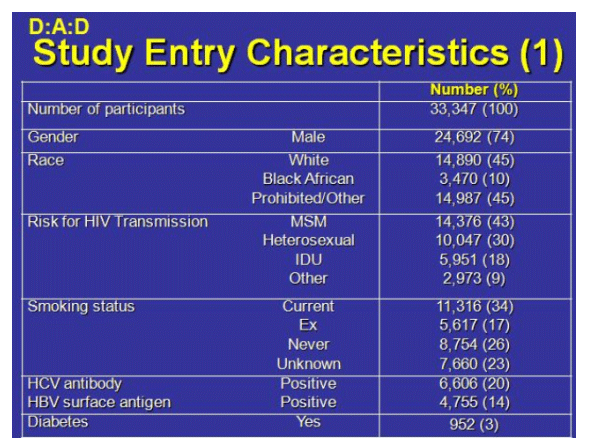
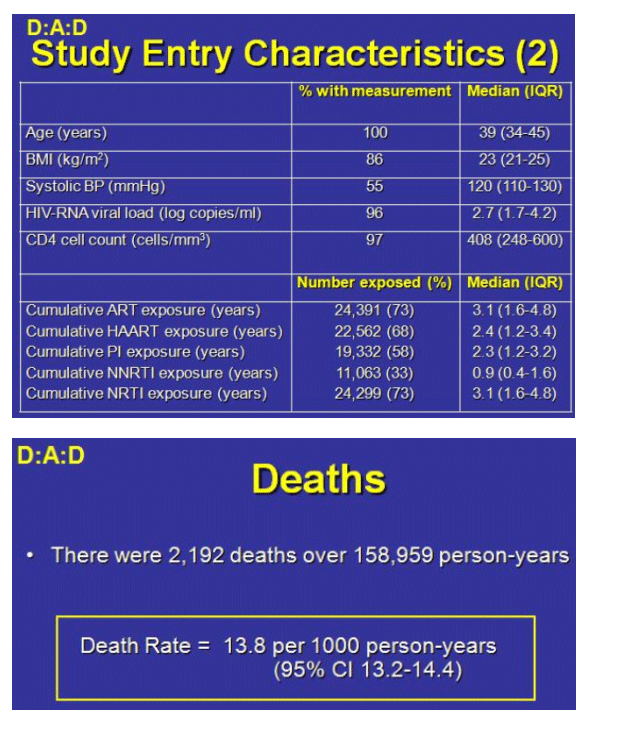
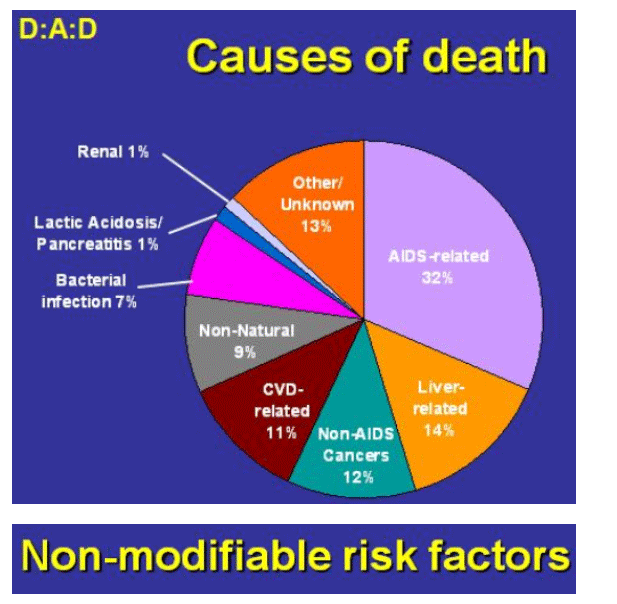
For every 10 years increased age the risk for death for any cause increased 22%, and those at older ages were at increased risk for all these causes of death. Men were at a higher risk for dyng of any cause when compared to women, and they saw a similar trend when looking at these 4 causes although none of these reached statistical significance.
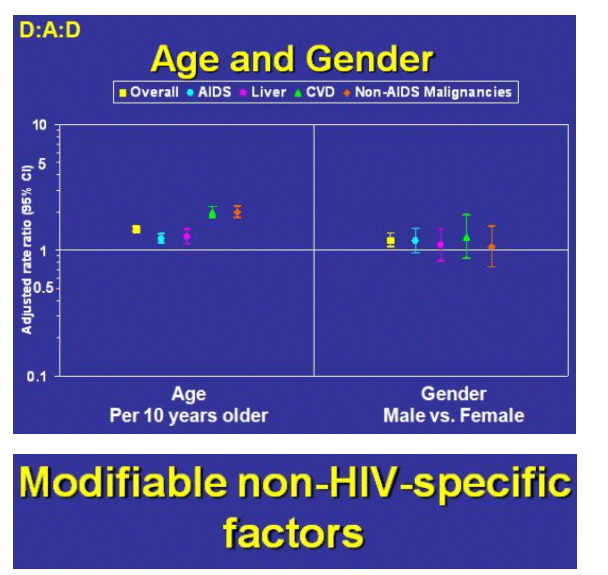
Currently smoking or ex-smokers were at a higher risk for dying compared to those who never smoked. There was no association between liver-related death and AIDS related deaths and smoking. But CVD and non-AIDS malignancies were much more common among current & ex-smokers than those who had never smoked. They have not yet been able to incorporate the time since some of the ex-smokers stopped smoking, some of them may have stopped relatively recently.
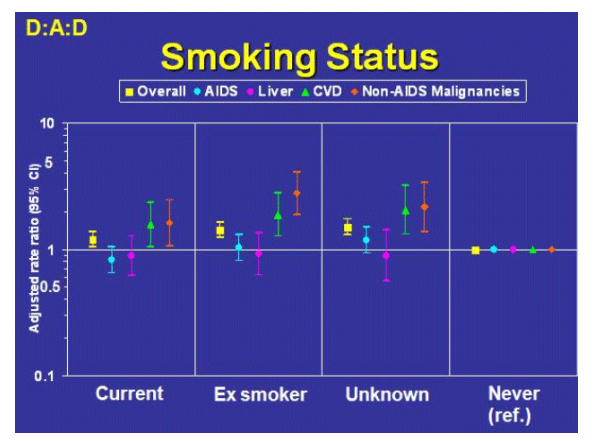
"We found a trend", as BMI increased overall risk of death decreased, with a particularly high risk of death for those who were underweight with a BMI of <18. A similar trend was found with regards to AIDS & non-AIDS malignancies, with those with a BMI <18 at a particularly high risk of death. This could be because people lose weight as they get sicker and die. In contrast, they did not see an association between CVD & non-AIDS malignancies and death.
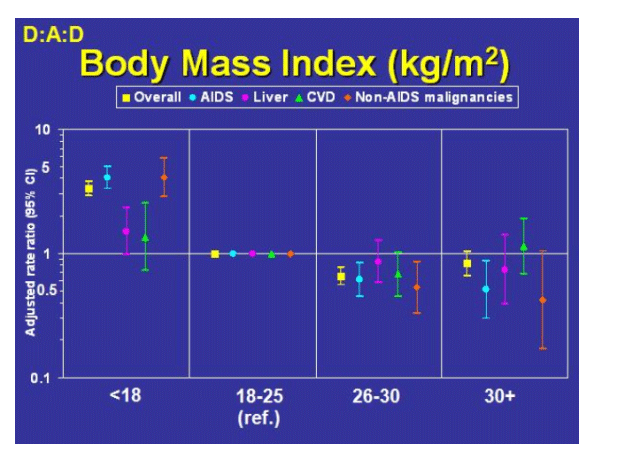
As expected those with hypertension & diabetes were at higher risk for death of CVD. "Surprisingly" they said they also found an association with liver disease (from Jules: its not a surprise because people with HCV are more likely to have diabetes and my guess is also hypertension). However when looking at AIDS related deaths and non-AIDS malignancies they did not find an association with hypertension and only a slightly increased risk for diabetics for dying from AIDS or non-AIDS malignancies.
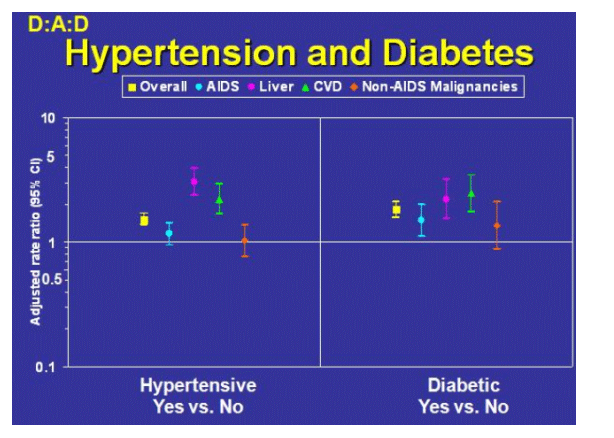
HCV + and HBV+ were at a higher risk for death due to any reason compared to hepatitis-negative individuals. Of course much of this as expected they much of this can be explained by liver-related deaths. HCV+ individuals as you can see in the graph are at a much higher risk for death compared to HBV+ but both HCV+ and HBV+ are at greater risk for death. They found no association between hepatitis status and any of the other 3 causes of death.
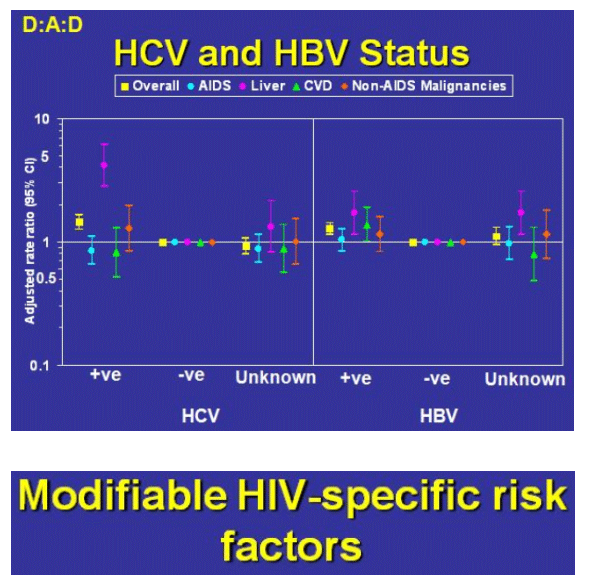
Those with lower CD4 counts are at a higher risk for death. For someone with a current CD4 count of 100 they have a 30% increased risk for death compared to someone with a CD4 count of 200.
CD4 and viral load were associated with increased risk for death. The effect of CD4 count was obviously particularly marked for those who died of AIDS-related deaths. Those with lower CD4 counts were also at risk for dying due to liver-related and non-AIDS malignancies, but a slight trend that Cd4 count affected CVD disease-related deaths.
The presenter said compared to someone with undetectable viral load someone with detectable viral load is at a much increased risk for death, and those off ART as in interruption are at the same risk, and as viral load increases off ART as you can see in the Table the risk increases with increasing viral load, and this trend is apparent in the Table for AIDS and liver-related deaths but was not seen for CVD & non-AIDS malignancies related deaths. (from Jules: but other studies have reported CD4s and viral load associated with cancers).
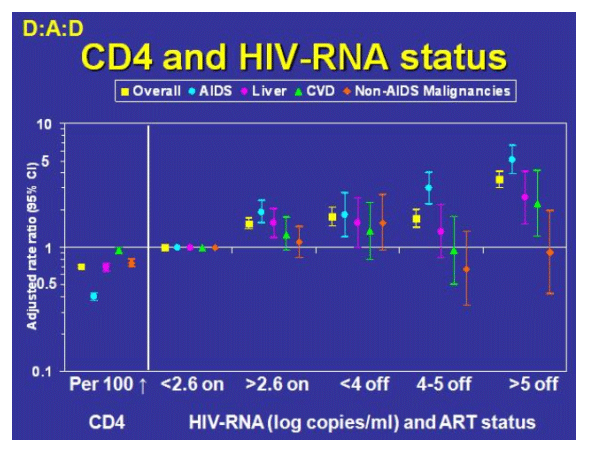
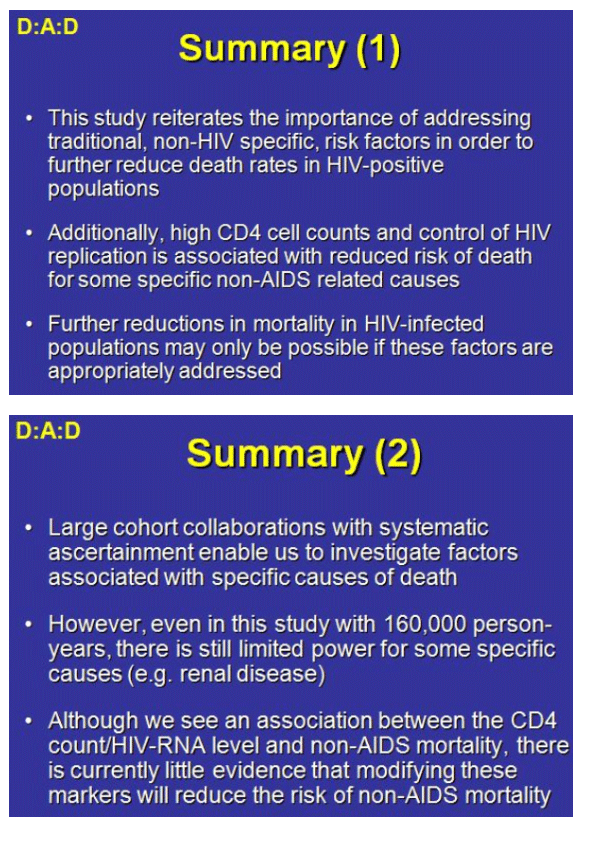
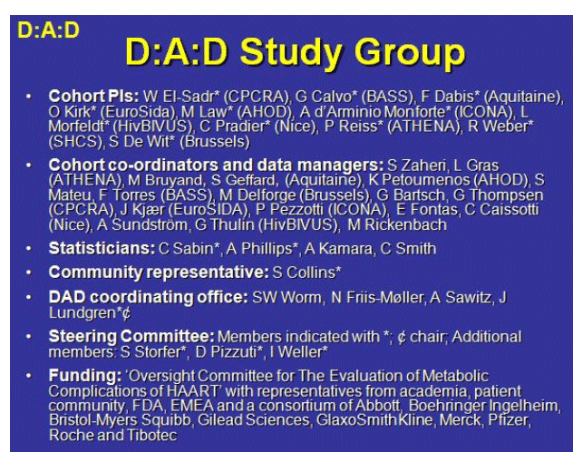
|
| |
|
 |
 |
|
|